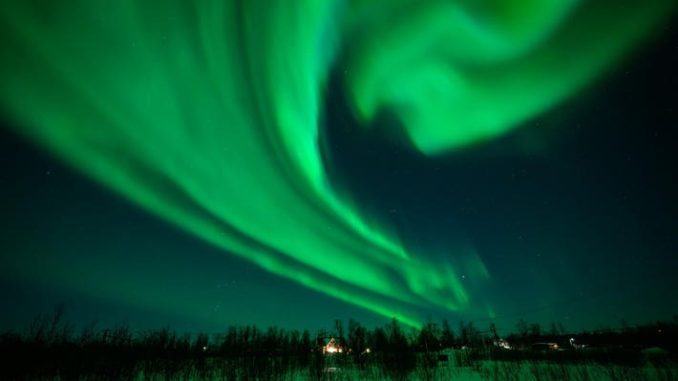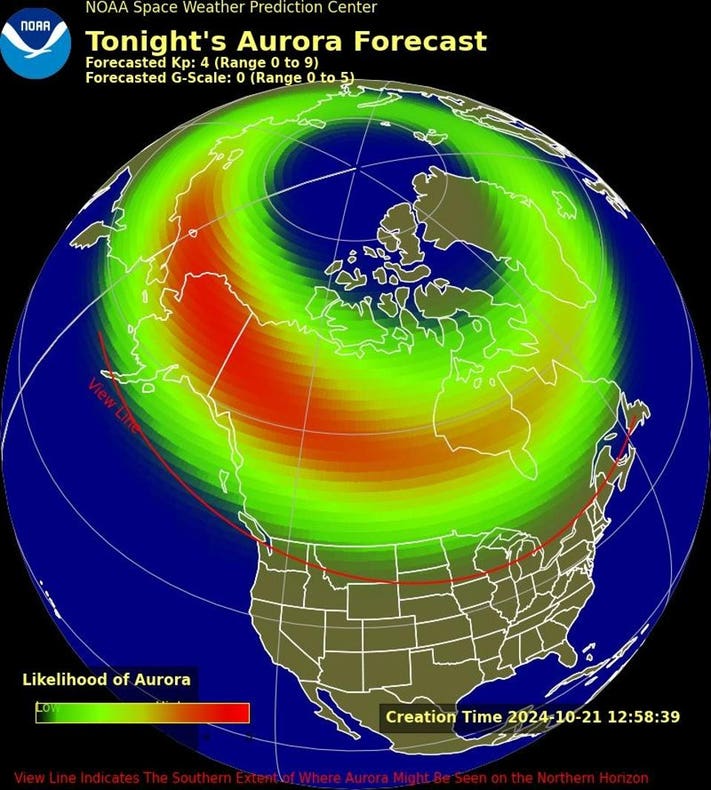
Aurora Alert: Northern Lights To Dazzle Us Again, These States Have A Chance To See Aurora Borealis Tonight
Parts of the northern U.S. could have a chance at seeing aurora borealis Monday night, and there will likely be more opportunities in the coming weeks as activity on the sun reaches its peak, according to a National Oceanic and Atmospheric Administration forecast.
Key Facts
NOAA forecast a Kp index of four on a scale of nine for Monday night, meaning the northern lights will “become brighter” and will be “quite pleasing to look at” for people in the right areas.

Auroral activity is expected to be quieter on Tuesday, according to NOAA, which forecast tomorrow’s Kp index at a 1, meaning the aurora will be “far north” and “quite dim in intensity.”
NASA and NOAA officials said last week there will soon be more solar flares, which will result in more aurora borealis as they interact with the Earth’s geomagnetic field.
Where Will The Northern Lights Be Visible?
States closer to the Canadian border will have a lower chance of seeing the northern lights, with better opportunities to see the phenomenon across northern Canada and Alaska. Parts of Washington, Idaho, Montana, Wyoming, North Dakota, South Dakota, Minnesota, Wisconsin, Michigan, New York and Maine will have a chance to see aurora borealis, according to NOAA. On Tuesday, a sliver of northern Minnesota will have a low likelihood.
What’s The Best Way To See The Northern Lights?
NOAA suggests traveling to a high vantage point away from light pollution to see the northern lights between 10 p.m. and 2 a.m. local time.
What’s The Best Way To Photograph The Northern Lights?
It’s better to set a regular camera’s focus to the farthest possible setting with a wide aperture, low shutter speed and high ISO value to capture the northern lights, according to Adobe. If using a smartphone, Iceland’s tourism website, Visit Iceland, recommends turning on night mode with a lower shutter speed.
Key Background
There will likely be more opportunities to see the northern lights in upcoming weeks as activity on the sun peaks, according to NASA. Elsayed Talaat, NOAA’s director of space weather observations, said the sun’s 11-year cycle—Solar Cycle 25—is at its maximum, meaning more sunspots will result in “high-impact” space weather. This includes more coronal mass ejections, which cause geomagnetic storms across Earth and aurora borealis to be pulled farther south. NASA believes the peak will continue through 2025 and potentially into early 2026.
Leave a Reply